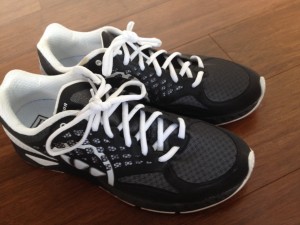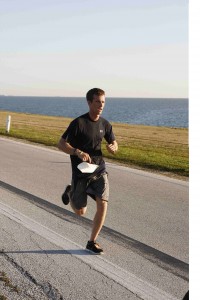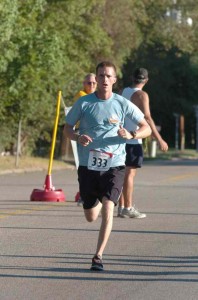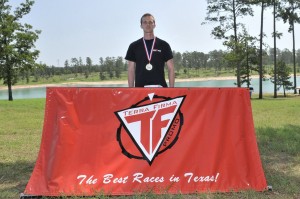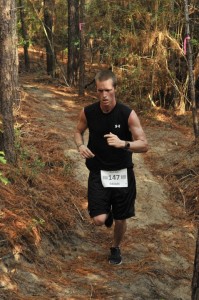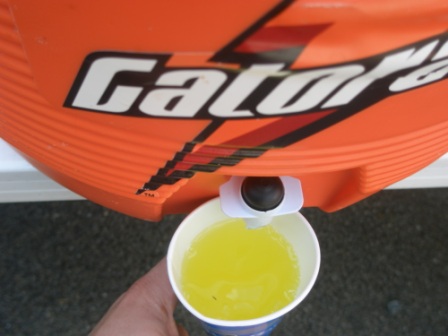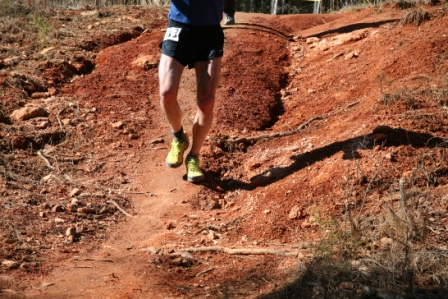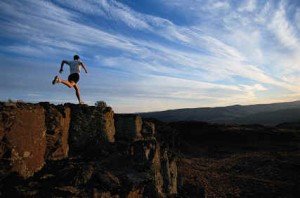After days of going over Men’s Vibram FiveFingers, it’s the Women’s turn now. Vibram had their new collection of minimalist running shoes along with their old favorites at Outdoor Retailer this year. They told me all about them and here’s what they said:
New Vibram Women’s FiveFingers KomodoSport: (MSRP $100) With today’s athlete in mind, Vibram FiveFingers has raised the intensity with Vibram FiveFingers KomodoSport. This aggressive multisport design inherits what we love about the KSO with functional improvements that appeal to the most active fitness enthusiast. For the first time ever, Vibram introduces a stitch-free, seamless 2mm footbed to reduce friction. Heel and instep hook-and-loop closures help secure the stretch nylon upper to the contours of your foot-just like a second skin. The KomodoSport wouldn’t be complete without a 4 mm Vibram TC1 performance rubber outsole which provides the grip and protection you need for a variety of cross training activities. These shoes are good for running and fitness.
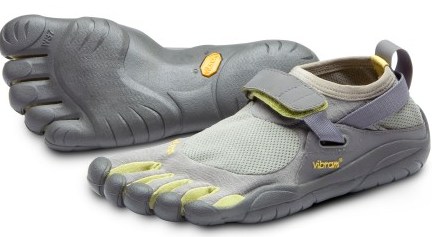 Vibram Women’s FiveFingers KSO: ($85.00) Over the last two years, the KSO has become the most popular model for women due to its comfort and versatility. A thin, abrasion-resistant stretch nylon and breathable mesh upper wraps your entire forefoot to “Keep Stuff Out,” and a single hook-and-loop closure helps secure the fit. A non-marking 3.5mm Vibram TC1 performance rubber outsole is razor-siped for a sure grip, and a 2mm EVA insole enhances plating protection and comfort. These shoes are good for light trekking, climbing/bouldering, running, fitness, after sport, water sports, yoga and pilates.
Vibram Women’s FiveFingers KSO: ($85.00) Over the last two years, the KSO has become the most popular model for women due to its comfort and versatility. A thin, abrasion-resistant stretch nylon and breathable mesh upper wraps your entire forefoot to “Keep Stuff Out,” and a single hook-and-loop closure helps secure the fit. A non-marking 3.5mm Vibram TC1 performance rubber outsole is razor-siped for a sure grip, and a 2mm EVA insole enhances plating protection and comfort. These shoes are good for light trekking, climbing/bouldering, running, fitness, after sport, water sports, yoga and pilates.
Vibram Women’s FiveFingers Sprint: ($80.00) The lightweight and open design of the Sprint has made the is model a long-time 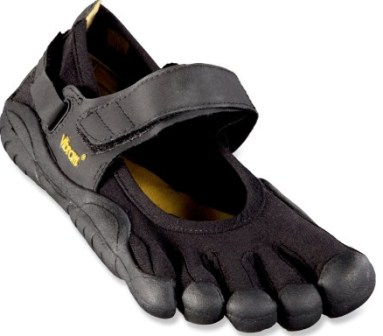 favorite. Adjustable hook-and-loop closures across the instep and around the heel deliver a comfortable, secure fit. A thin stretch nylon fabric comfortably follow the contour of the foot. And a flexible, non-marking 3.5mm Vibram TC-1 performance rubber sole is razor-siped for improved flexibility and slip resistance. These shoes are good for climbing/bouldering, running, fitness, after sport, water sports, yoga and pilates.
favorite. Adjustable hook-and-loop closures across the instep and around the heel deliver a comfortable, secure fit. A thin stretch nylon fabric comfortably follow the contour of the foot. And a flexible, non-marking 3.5mm Vibram TC-1 performance rubber sole is razor-siped for improved flexibility and slip resistance. These shoes are good for climbing/bouldering, running, fitness, after sport, water sports, yoga and pilates.
 Vibram Women’s FiveFingers Classic: ($75.00)From day one, the FiveFingers Classic has drawn the attention and praise of the press and active barefoot enthusiasts alike. Available for women and men, our original FiveFingers design takes a more casual and minimalist approach to barefooting. The upper features a thin stretch nylon fabric that fits low on the foot. Our non-marking 3.5mm Vibram TC1 performance rubber soles are razor siped for improved flexibility and slip resistance over a variety of terrain. These shoes are good for fitness, running, after sport, yoga and pilates.
Vibram Women’s FiveFingers Classic: ($75.00)From day one, the FiveFingers Classic has drawn the attention and praise of the press and active barefoot enthusiasts alike. Available for women and men, our original FiveFingers design takes a more casual and minimalist approach to barefooting. The upper features a thin stretch nylon fabric that fits low on the foot. Our non-marking 3.5mm Vibram TC1 performance rubber soles are razor siped for improved flexibility and slip resistance over a variety of terrain. These shoes are good for fitness, running, after sport, yoga and pilates.
 Vibram Women’s FiveFingers Bikila: ($99.95) Unlike any running shoe on the market today, the Bikila was the first model designed specifically for a more natural, healthier, and more efficient forefoot strike. While many have been running in their Vibram FiveFiners for years, the Bikila is Vibram’s first model designed specifically for near barefoot running. Built on an entirely new platform, the Bikila features a Dri-Lex covered 3mm polyurethane insole (thickets under the ball) and a 4mm anatomical pod outsole design that offers more plating protection, and distributes forefoot impact without compromising important ground feedback essential to a proper forefoot strike running form. A more athletic padded collar and topline, a single hook and loop closure, a 3M reflective surfaces, and tear resistant TPU toe protection finish off this breakthrough design. These shoes are great for running and fitness.
Vibram Women’s FiveFingers Bikila: ($99.95) Unlike any running shoe on the market today, the Bikila was the first model designed specifically for a more natural, healthier, and more efficient forefoot strike. While many have been running in their Vibram FiveFiners for years, the Bikila is Vibram’s first model designed specifically for near barefoot running. Built on an entirely new platform, the Bikila features a Dri-Lex covered 3mm polyurethane insole (thickets under the ball) and a 4mm anatomical pod outsole design that offers more plating protection, and distributes forefoot impact without compromising important ground feedback essential to a proper forefoot strike running form. A more athletic padded collar and topline, a single hook and loop closure, a 3M reflective surfaces, and tear resistant TPU toe protection finish off this breakthrough design. These shoes are great for running and fitness.
New Vibram Women’s FiveFingers Bikila LS: (MSRP $100) Following in the footsteps of the original Vibram FiveFingers Bikila, the new Bikila LS offers a closed speed lace system to accommodate the wider foot or higher instep. It shares the same revolutionary platform as the Bikila, featuring a Dri-Lex covered 3mm polyurethane insole (thickets under the ball) and a 4mm anatomical pod outsole design. This combination provides superior plating protection and distributes forefoot impact without compromising essential ground feedback. The bIkila LS upper is constructed of Coconut Active Carbon for natural breathability. An athletic padded collar and topline, 3M reflective surfaces, and abrasion resistant PU toe protection add to Bikila LS road worthy design. The defining feature of the Bikila LA is its closed quick lace system assuring a custom fit for a wider range of foot types. These shoes are great for fitness and running.
Check out more Women’s Vibram FiveFingers.
Or check out some of the Men’s Vibram FiveFingers styles.


